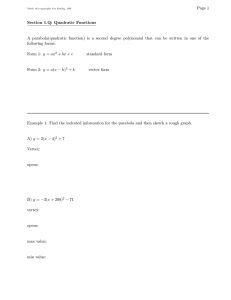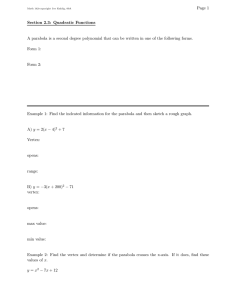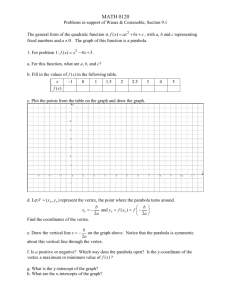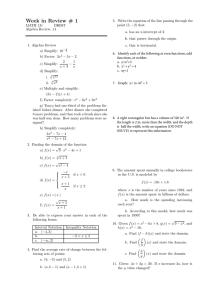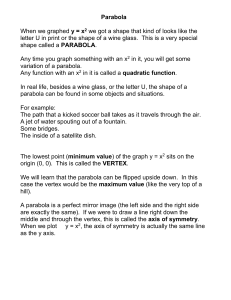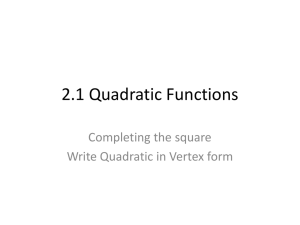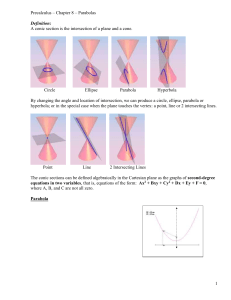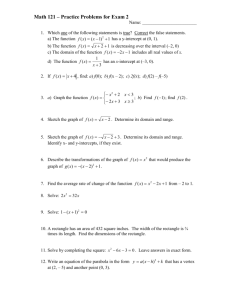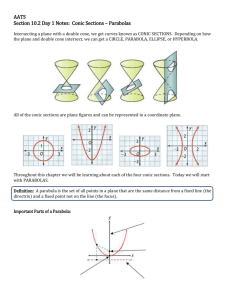Introduction to Quadratic Functions
advertisement
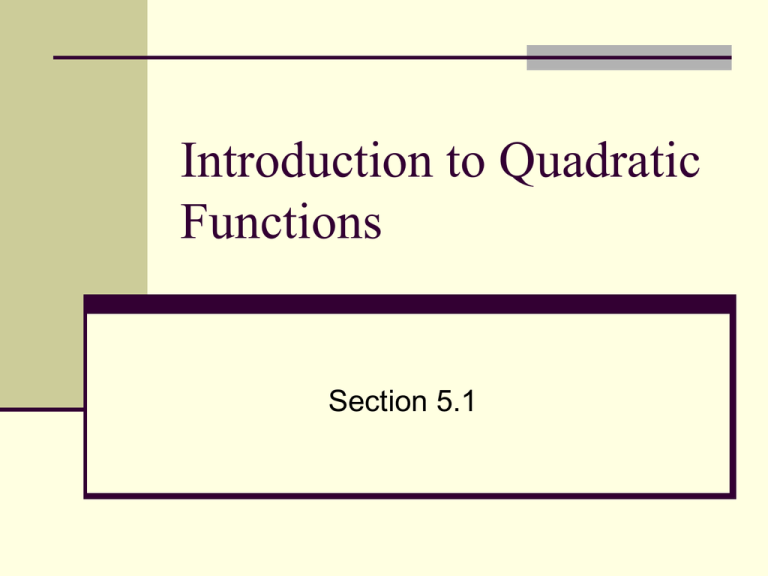
Introduction to Quadratic Functions Section 5.1 Quadratic function – any function that can be written in the form f x ax 2 bx c, where a 0 Ex. 1 Let g(x) = (4x + 3)(x – 6). Show that g represents a quadratic function. Identify a, b, and c when the function is written in the form g x ax 2 bx c Ex.1 continued g(x) = (4x + 3)(x – 6) FOIL to simplify 2 4x 24x 3x 18 g(x) = 2 g(x) = 4x 21x 18 a = 4, b = -21, c = -18 Ex.2 g(x) = (2x - 5)(x – 2) 2 2x 4x 5x 10 g(x) = g(x) = 2x 2 9x 10 a = 2, b = -9, c = 10 Graphing quadratic functions Graphs as a parabola. If a > 0, the parabola opens up. If a < 0, the parabola opens down. If the parabola opens up, the vertex is the lowest point. The y-coordinate of the vertex is the minimum value of f(x). If the parabola opens down, the vertex is the highest point. The y-coordinate of the vertex is the maximum value of f(x). State whether the parabola opens up or down and whether the y-coordinate of the vertex is a minimum value or maximum value of the function. Ex. 3 f(x) = 5x 2 3x a = 5 so the parabola opens up and the y coordinate of the vertex in the minimum value of the function Ex 4 h(x) = (5 – x)(2 + 3x) FOIL to see what a is. h(x) = 3x 2 13x 10 a = -3 so the parabola opens down and the y- coordinate of the vertex is the maximum value
